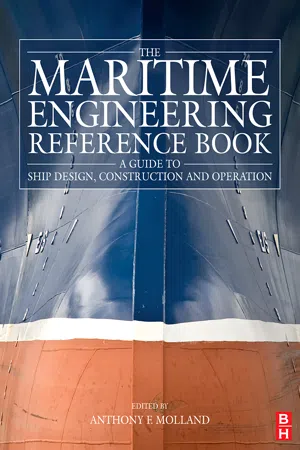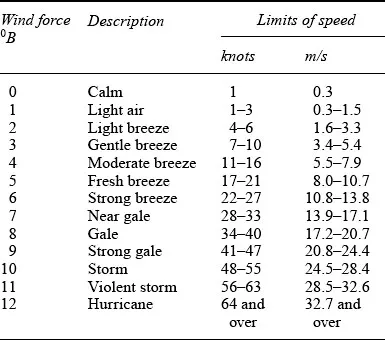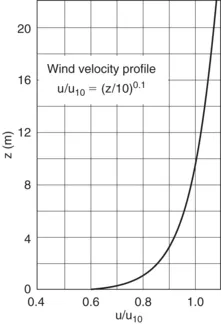
The Maritime Engineering Reference Book
A Guide to Ship Design, Construction and Operation
- 920 pages
- English
- ePUB (mobile friendly)
- Available on iOS & Android
The Maritime Engineering Reference Book
A Guide to Ship Design, Construction and Operation
About this book
The Maritime Engineering Reference Book is a one-stop source for engineers involved in marine engineering and naval architecture. In this essential reference, Anthony F. Molland has brought together the work of a number of the world's leading writers in the field to create an inclusive volume for a wide audience of marine engineers, naval architects and those involved in marine operations, insurance and other related fields. Coverage ranges from the basics to more advanced topics in ship design, construction and operation. All the key areas are covered, including ship flotation and stability, ship structures, propulsion, seakeeping and maneuvering. The marine environment and maritime safety are explored as well as new technologies, such as computer aided ship design and remotely operated vehicles (ROVs).Facts, figures and data from world-leading experts makes this an invaluable ready-reference for those involved in the field of maritime engineering.Professor A.F. Molland, BSc, MSc, PhD, CEng, FRINA. is Emeritus Professor of Ship Design at the University of Southampton, UK. He has lectured ship design and operation for many years. He has carried out extensive research and published widely on ship design and various aspects of ship hydrodynamics.* A comprehensive overview from best-selling authors including Bryan Barrass, Rawson and Tupper, and David Eyres* Covers basic and advanced material on marine engineering and Naval Architecture topics* Have key facts, figures and data to hand in one complete reference book
Frequently asked questions
- Essential is ideal for learners and professionals who enjoy exploring a wide range of subjects. Access the Essential Library with 800,000+ trusted titles and best-sellers across business, personal growth, and the humanities. Includes unlimited reading time and Standard Read Aloud voice.
- Complete: Perfect for advanced learners and researchers needing full, unrestricted access. Unlock 1.4M+ books across hundreds of subjects, including academic and specialized titles. The Complete Plan also includes advanced features like Premium Read Aloud and Research Assistant.
Please note we cannot support devices running on iOS 13 and Android 7 or earlier. Learn more about using the app.
Information
1.1 The Ship in the Marine Environment
1.2 Wind






Table of contents
- Cover image
- Title page
- Table of Contents
- Copyright
- Preface
- Chapter 1: The marine environment
- Chapter 2: Marine vehicle types
- Chapter 3: Flotation and stability
- Chapter 4: Ship structures
- Chapter 5: Powering
- Chapter 6: Marine engines and auxiliary machinery
- Chapter 7: Seakeeping
- Chapter 8: Manoeuvring
- Chapter 9: Ship design, construction and operation
- Chapter 10: Underwater vehicles
- Chapter 11: Marine safety
- Chapter 12: Glossary of terms and definitions
- Author Biographies
- Index